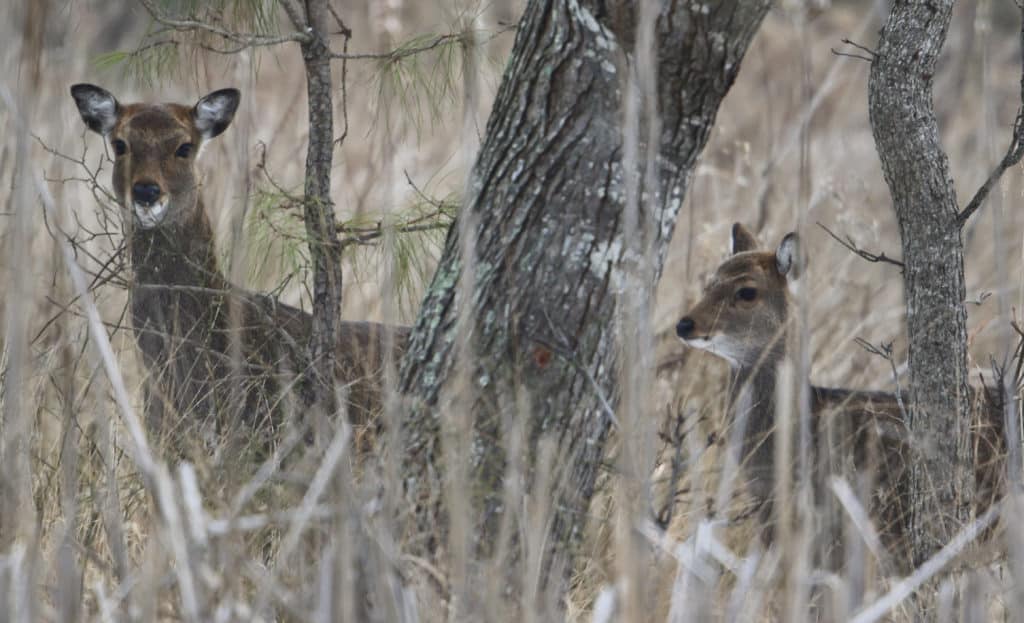Creature Feature

Sika Deer Introduced From Japan
By Wayne Bierbaum
An invasive species is an animal or plant that displaces native species or injures the native environment. Sika deer are a Japanese species that was introduced to Maryland’s Eastern Shore. They are not competitive with the native white-tailed deer and since they were introduced, they are not considered invasive.
On my first visit to the southern end of Assateague Island in Virginia, I saw a herd of a dozen sika deer splashing across a marsh to a pine island. When they saw me, I heard some of them barking like a dog as they picked up the pace.
I have since seen many around the wetlands of Blackwater National Wildlife Refuge. What all of my sightings have in common is that they were in or at the edge of swampy areas. These deer are at home in marshlands and swamps which white-tailed deer usually avoid.
The sika deer is also called spotted deer as they keep their spots throughout their life. There are several sub-species in east Asia from southern Russia to Thailand. The sub-species introduced here from Japan in 1909 has faint spotting on their back. The males, bucks, are wanderers and fairly solitary. Males mark territory by digging shallow depressions and filling it with musk. Bucks can weigh up to 180 pounds but are typically around 120. The females are known as hinds. The hinds live in groups with juveniles and tend to stay within a square mile area. When the rut (courting season) arrives, the males will herd the mature females into harems. After a winter gestation, one fawn is born in the spring and nurtured for ten months. Sika deer have an 18-year lifespan, which is longer than the white-tailed deer.
The most remarkable characteristic of the sika deer is its vocalizations. They have been recorded as having ten distinct sounds. I have heard the barking they make when startled or warning the herd. It does sound fairly doglike. I have been afraid I had a loose dog coming after me when a barking sika deer was close. The deer also can have upper canine teeth visible outside the lower jaw (visible in the photo above).
These little deer are a favorite target of hunters. Sika deer apparently have not yet been affected by chronic wasting disease but at least one report shows that they can become infected. Maryland has the largest population of free roaming sika deer. Hopefully, their separation from white-tailed deer populations will keep the little sika far away from the disease.
